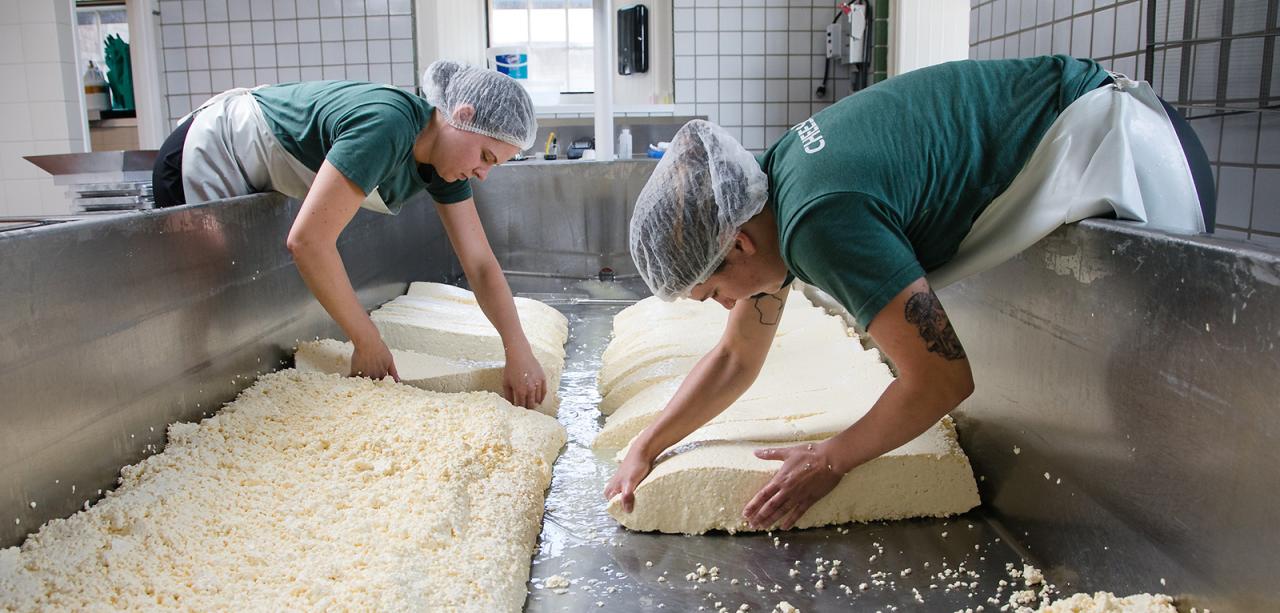Exploring Melbourne Made Cheese: Why Floridia Cheese Is a Must-Try
Exploring Melbourne Made Cheese: Why Floridia Cheese Is a Must-Try
Blog Article
Unlocking the Secrets of Artisanal Cheese Making: A Step-by-Step DIY Guide
In the realm of culinary workmanship, artisanal cheese making stands as a testimony to the fragile equilibrium in between tradition and development. As we get started on this trip to demystify the art of developing elegant cheeses, we are encountered with a tapestry of skills and keys waiting to be untangled.
Selecting the Right Milk
When getting started on the journey of artisanal cheese making, the selection of milk plays an essential duty in identifying the high quality and features of the final item. The type of milk picked impacts the taste, texture, and overall account of the cheese.
Additionally, the source of the milk, whether from cows, goats, lamb, or buffalo, adds distinct tastes and characteristics to the cheese. Each type of milk brings its own nuances, enabling for a broad variety of cheese varieties to be crafted based on the chosen milk.
Culturing and Coagulating
To launch the cheese-making process, the vital steps of culturing and coagulating need to be very carefully implemented to transform milk right into curds and whey. Culturing involves introducing beneficial germs to the milk, which after that starts the fermentation procedure. These germs convert lactose (milk sugar) into lactic acid, producing the acidic atmosphere required for coagulation. The sort of culture used can considerably impact the taste, texture, and ripening of the last cheese product.

The timing and temperature control during culturing and coagulation are important aspects that influence the last end result of celebrity. Appropriate execution of these actions is vital to make certain the desired structure, taste, and uniformity of the artisanal cheese being generated.
Draining and Pressing Curds
After the milk proteins have coagulated and the curds have been cut to launch whey, the following critical step in artisanal cheese making involves draining pipes and pressing the curds to accomplish the wanted appearance and uniformity of the last cheese product. The time for draining pipes can vary depending on the type of cheese being made and the wanted dampness content.
Pushing assists expel any kind of remaining whey and compacts the curds to create a solid cheese wheel. Correct draining pipes and pressing are crucial steps that dramatically influence the top quality and qualities of the artisanal cheese being generated.
Aging and Flavoring Strategies
Executing meticulous aging and flavoring strategies is crucial in improving the depth and complexity of artisanal cheeses, elevating their taste profiles to splendid levels of refinement and sophistication. Aging plays a critical function in creating the one-of-a-kind tastes and appearances Floridia Cheese Melbourne that differentiate artisanal cheeses.
Flavoring methods also add dramatically to the final preference of artisanal cheeses. Cheesemakers may pick to present additional tastes by incorporating active ingredients such as herbs, flavors, and even fruits into celebrity during the production procedure. In addition, some cheeses are cleaned or rubbed with numerous fluids, such as brine or alcohol, to boost their tastes and structures.
Covering and Storing Cheeses

Conclusion
In verdict, understanding the art of artisanal cheese making involves carefully selecting the best milk, complying with exact culturing and coagulating procedures, draining pipes and pressing curds successfully, and utilizing various aging and flavoring techniques. Remember to wrap and store your cheeses properly to ensure optimum taste and appearance growth.
Each kind of milk brings its own nuances, allowing for a wide array of cheese selections to be crafted based on the chosen milk.After the milk proteins have actually coagulated and the curds have been reduced to release whey, the next important action in artisanal cheese making includes draining and pressing the curds to achieve the wanted appearance and consistency of the final cheese item. The majority of cheeses must be wrapped in wax paper or cheese paper to allow them to take a breath while shielding them from drying out. For cheeses that require to proceed aging, such as bloomy rinds or cleaned peels, ensure they are stored in a cool setting like a cheese cave or a refrigerator established to the proper temperature. By paying focus to the covering and storage of artisanal cheeses, cheese manufacturers and lovers can preserve the honesty of these specials and fully appreciate their complicated tastes.
Report this page